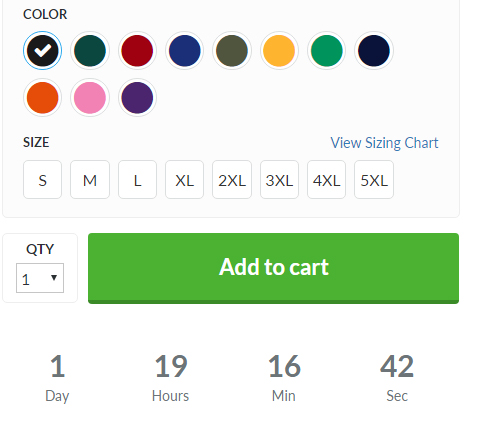Browser Wars: Why You Should Care

It is human nature that we all tend to resist change. From brand loyalty to daily routines, we tend to be pretty predictable as individuals. When it comes to the browsers that we use to surf the Internet, we tend to be quite settled in our ways, with very few of us whimsically switching from Safari to Edge to Opera. Part of the reason has to do with the way we each like to stay within our own comfort zone, and another part of the reason involves convenience. Switching to a new browser can be a somewhat daunting task, with bookmarks, history, remembered passwords and other settings to be either imported or rebuilt.
In my own instance, I had been loyal to the Firefox browser for several years now, ever since Internet Explorer’s difficulties pushed me over the edge. More recently, I had been reluctantly tolerating the fact that Firefox was either locking up or crashing on my relatively new Windows 10 computer for several weeks. It got to the point where its misbehavior became predictable, with a day when Firefox did not crash being about as rare as a three dollar bill. I continued to wait for the next Firefox update to resolve my problem – after all, I had auto-submitted probably 100 error reports to Mozilla over this time – but to no avail. When it locked up, I would often check Windows 10 Task Manager, and I would find that Firefox was using 15% of my CPU capacity and taking up way too much memory.
Enough was enough. I decided that I had run out of patience, and it was time to leave Firefox behind as my default browser. Although most of us are familiar with only a handful of options, there is actually quite a collection of available options. I was gravitating toward Vivaldi, but neither the LastPass password manager nor the Disconnect ad blocker that I rely upon support the Vivaldi browser. Based upon plug-in support, I decided to move to Chrome, and I am seeing a remarkable improvement in the speed of my browsing experience, with Chrome using about 0.1% of CPU capacity and barely more than 0.001% of my system’s RAM.
For a variety of reasons, it is difficult to compile really accurate statistics regarding browser usage, even in only the United States, let alone globally. If you check your own website’s statistics in Google Analytics, you will notice that a very high percentage will be identified as “unknown”. Probably the most reliable data is presented by Net Market Share, where it is clear that on desktop computers and tablets, Chrome is the leader of the pack and gaining ground, Internet Explorer is rapidly losing market share (with few users embracing Microsoft Edge as its replacement), and Firefox, Safari, and everything else is pretty much just holding its own with far lower percentages of users. These trends are also tracked in the ongoing browser statistics compiled by W3Schools.com.
Of course, smartphones are accounting for an ever-greater share of Web browsing, and they present an entirely different set of statistics, where most users tend not to switch away from the default Android or iOS browser that comes installed on their devices.
You may be wondering why this might be important to you. First of all, go ahead and embrace change in your own browsing habits. Almost incomprehensibly, the (fortunately dwindling) numbers of Internet Explorer users include people who are still using IE10, IE9, IE8, and even older versions, seemingly oblivious to the fact that IE 11 was replaced by Microsoft Edge, where the current version at the time of this writing is Edge15. Running older versions of browser software represents a severe security risk, particularly when that browser is no longer supported by its developer (Microsoft, in the instance of Internet Explorer.) There is a big difference between being loyally running the latest version of Safari on your Mac and blindly running Internet Explorer 8 because it came installed on your old Windows 7 computer.
From a business perspective, it is important that you (or your webmaster) check how your website renders and performs on all browsers, operating systems, and devices that are commonly in use today. Some sites look fine on some browsers but less than perfect on others, whereas many older sites are essentially useless on mobile devices.
Not that long ago, I checked the new website of a campground using the Firefox browser that was still my default at the time. The site, which looked very nice with its embedded YouTube video, embedded widgets and more WordPress plug-ins than you could shake a stick at, would barely load in Firefox and who knows how it works in all those versions of Internet Explorer that people are still using. (Yes, it works much better in Chrome!) Well, according to Net Market Share, Firefox holds 11.79% of the current market share, Internet Explorer’s various versions still occupy 18.95% of market share, and I do not know of a single campground that can afford to risk driving away over 30% of its potential customers.
Going back to that content-heavy website, another very interesting and eye-opening test measures the actual cost of viewing a site on a mobile device using the most popular mobile service providers in various countries (those providers being Verizon and AT&T in the United States.) Calculating the best case scenario using the least expensive data plans, the actual cost of visiting that website is $0.86 in the United States and a whopping $1.65 in Canada (based upon U.S. dollars.) If your potential guest is on a limited data usage plan, a site like this with 9MB of total loaded content is not making a favorable first impression. Chances are those people are not going to wait for the site to load and run up their bills. To run a test of your site, visit What Does My Site Cost?
Are you in the mood for another test? Although any website (unless it uses Flash) will render on a mobile device, it may or may not present optimized content on either Android devices or iPhones. To test your site’s appearance on mobile devices, use the Google Mobile-Friendly Test, where the results might present a rude awakening of how your site appears to perhaps 50% or more of its visitors (many of whom will then abandon your site even faster than they found it!)
As you can see, choices in Web browsers can have far greater implications than first meet the eye. Although Firefox is no longer my default browser, it is still running on my computer for testing purposes, along with Safari, Edge, Opera and, of course, Chrome. If your site’s testing is not up to par, particularly in terms of its overall mobile-friendliness, it may be time to consider its overall cost to your park in potentially lost business.
This post was written by Peter Pelland




